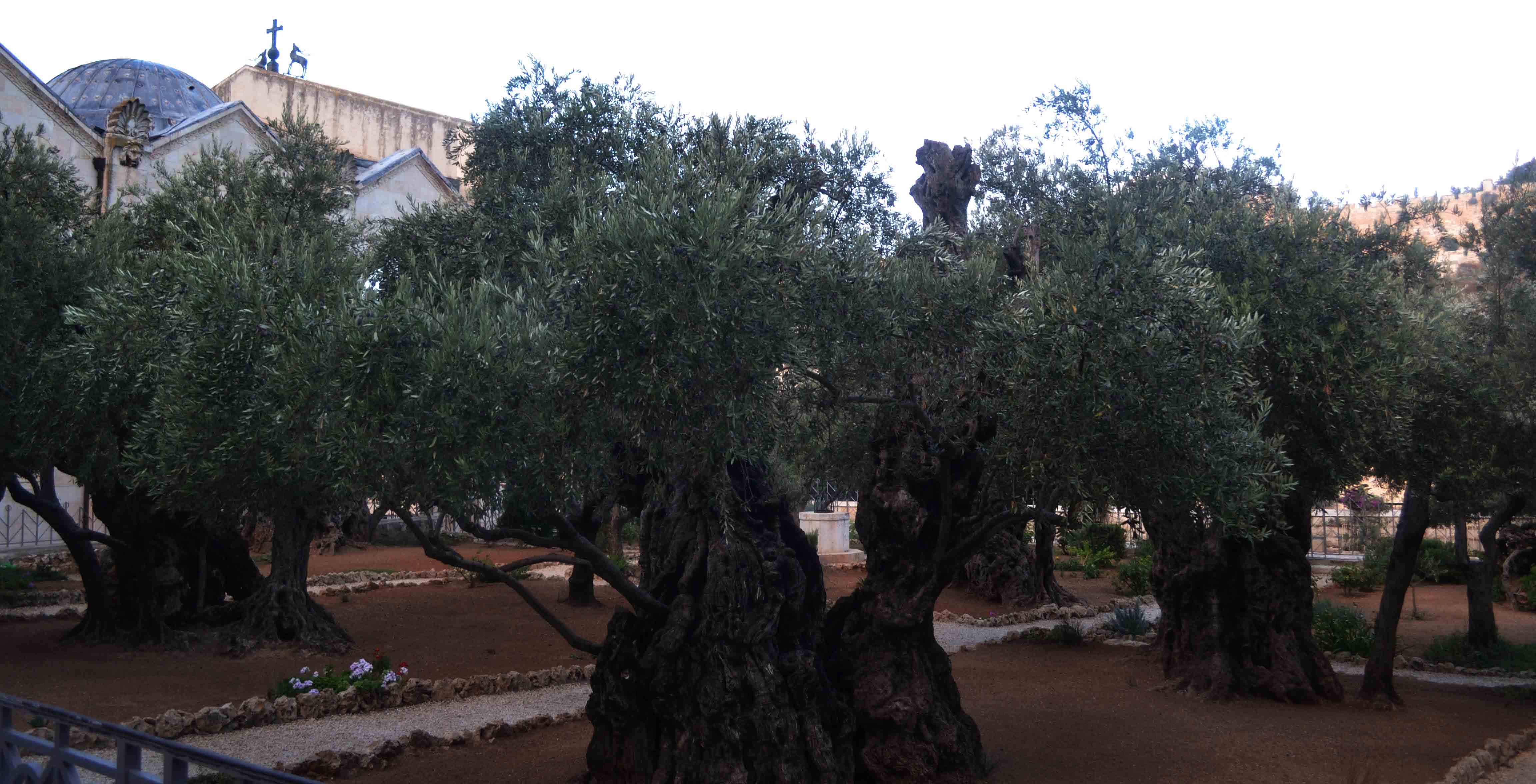
Saturday morning, to the amazement of pilgrims, more than twenty people harvested olives; with enthusiasm , a bit of emotion and some adventure, they climbed the ladders to catch the precious fruit of the olive trees in the Hermitage garden at Gethsemane.
“It is a very old tradition,” said Fra Diego, the director of the Hermitage, “and our work of harvesting, in this place favoured by Jesus, is inspired by the short speech he made to his disciples in Samaria. Jesus, in a particular situation, says that the time for harvest is near, a harvest which needs to be accomplished. The references are many, apparently different, but they speak of the Messianic presence, the mystery that he has come to manifest through his person.”
Gethsemane, in Aramaic - Gath Shemani גת שמנים – means oil press, and for Christians, this holds a very strong theological significance. In Gethsemane, Jesus, in the drama of his Passion, gives his live. In our lowliness and poverty as we pick the olives, we taste the joy of meeting with Him who has sown for us the fruits of eternal life.
The fruit of the work from these days will be transformed into the oil of Gethsemane, sent to the Franciscan monasteries of the Holy land to be used in particular for the Chrism Mass, celebrated on the morning of Holy Thursday.
Pilgrims are also able to take home some of the oil as a reminder of this privileged place.
In the regions of Israel and Palestine, the presence of the olive still imposes itself no only as an element of the landscape, but also with all its richness in history and symbolism. In fact, biblical themes show olives as one of the most valuable plants, equal to the vine and the fig.
In the Bible, after the Flood, the dove brought an olive leaf to Noah to show that the waters had receded.
We pray to the Lord of life to give us the gift of peace that we urgently need, now more than ever.
“It is a very old tradition,” said Fra Diego, the director of the Hermitage, “and our work of harvesting, in this place favoured by Jesus, is inspired by the short speech he made to his disciples in Samaria. Jesus, in a particular situation, says that the time for harvest is near, a harvest which needs to be accomplished. The references are many, apparently different, but they speak of the Messianic presence, the mystery that he has come to manifest through his person.”
Gethsemane, in Aramaic - Gath Shemani גת שמנים – means oil press, and for Christians, this holds a very strong theological significance. In Gethsemane, Jesus, in the drama of his Passion, gives his live. In our lowliness and poverty as we pick the olives, we taste the joy of meeting with Him who has sown for us the fruits of eternal life.
The fruit of the work from these days will be transformed into the oil of Gethsemane, sent to the Franciscan monasteries of the Holy land to be used in particular for the Chrism Mass, celebrated on the morning of Holy Thursday.
Pilgrims are also able to take home some of the oil as a reminder of this privileged place.
In the regions of Israel and Palestine, the presence of the olive still imposes itself no only as an element of the landscape, but also with all its richness in history and symbolism. In fact, biblical themes show olives as one of the most valuable plants, equal to the vine and the fig.
In the Bible, after the Flood, the dove brought an olive leaf to Noah to show that the waters had receded.
We pray to the Lord of life to give us the gift of peace that we urgently need, now more than ever.

